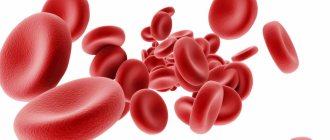Lindinet 20
Use during pregnancy and breastfeeding
The drug is contraindicated for use during pregnancy and lactation.
The components of the drug are excreted in breast milk in small quantities.
When used during lactation, milk production may decrease.
Use for liver dysfunction
Contraindicated in case of liver dysfunction.
Use for renal impairment
The drug is not recommended for use in patients with kidney disease.
special instructions
Before starting to use the drug, it is necessary to conduct a general medical examination (detailed family and personal history, blood pressure measurement, laboratory tests) and gynecological examination (including examination of the mammary glands, pelvic organs, cytological analysis of a cervical smear). Such examinations during the period of taking the drug are carried out regularly, every 6 months.
The drug is a reliable contraceptive: the Pearl index (an indicator of the number of pregnancies occurring during the use of a contraceptive method in 100 women over 1 year) when used correctly is about 0.05. Due to the fact that the contraceptive effect of the drug from the start of administration is fully manifested by the 14th day, it is recommended to additionally use non-hormonal methods of contraception in the first 2 weeks of taking the drug.
In each case, before prescribing hormonal contraceptives, the benefits or possible negative effects of their use are individually assessed. This issue must be discussed with the patient, who, after receiving the necessary information, will make the final decision on the preference for hormonal or any other method of contraception.
The woman's health condition must be carefully monitored. If any of the following conditions/diseases appear or worsen while taking the drug, you must stop taking the drug and switch to another, non-hormonal method of contraception:
- diseases of the hemostatic system;
- conditions/diseases predisposing to the development of cardiovascular and renal failure;
- epilepsy;
- migraine;
- the risk of developing an estrogen-dependent tumor or estrogen-dependent gynecological diseases;
- diabetes mellitus not complicated by vascular disorders;
- severe depression (if depression is associated with impaired tryptophan metabolism, then vitamin B6 can be used for correction);
- sickle cell anemia, because in some cases (for example, infections, hypoxia), estrogen-containing drugs for this pathology can provoke thromboembolism;
- the appearance of abnormalities in laboratory tests assessing liver function.
Thromboembolic diseases
Epidemiological studies have shown that there is a connection between taking oral hormonal contraceptives and an increased risk of developing arterial and venous thromboembolic diseases (including myocardial infarction, stroke, deep vein thrombosis of the lower extremities, pulmonary embolism). An increased risk of venous thromboembolic diseases has been proven, but it is significantly less than during pregnancy (60 cases per 100 thousand pregnancies). When using oral contraceptives, arterial or venous thromboembolism of the hepatic, mesenteric, renal or retinal vessels is very rarely observed.
The risk of arterial or venous thromboembolic disease increases:
- with age;
- when smoking (heavy smoking and age over 35 years are risk factors);
- if there is a family history of thromboembolic diseases (for example, parents, brother or sister). If a genetic predisposition is suspected, it is necessary to consult a specialist before using the drug;
- for obesity (BMI more than 30 kg/m2);
- with dislipoproteinemia;
- with arterial hypertension;
- for diseases of the heart valves complicated by hemodynamic disorders;
- with atrial fibrillation;
- with diabetes mellitus complicated by vascular lesions;
- with prolonged immobilization, after major surgery, after surgery on the lower extremities, after severe trauma.
In these cases, it is assumed that the use of the drug should be temporarily discontinued (no later than 4 weeks before surgery, and resumed no earlier than 2 weeks after remobilization).
Women after childbirth have an increased risk of venous thromboembolic disease.
It should be taken into account that diabetes mellitus, systemic lupus erythematosus, hemolytic-uremic syndrome, Crohn's disease, ulcerative colitis, sickle cell anemia increase the risk of developing venous thromboembolic diseases.
It should be taken into account that resistance to activated protein C, hyperhomocysteinemia, protein C and S deficiency, antithrombin III deficiency, and the presence of antiphospholipid antibodies increase the risk of developing arterial or venous thromboembolic diseases.
When assessing the benefit/risk ratio of taking the drug, it should be taken into account that targeted treatment of this condition reduces the risk of thromboembolism. Symptoms of thromboembolism are:
- sudden chest pain that radiates to the left arm;
- sudden shortness of breath;
- any unusually severe headache that continues for a long time or appears for the first time, especially when combined with sudden complete or partial loss of vision or diplopia, aphasia, dizziness, collapse, focal epilepsy, weakness or severe numbness of half the body, movement disorders, severe unilateral pain in the calf muscle, symptom complex “acute abdomen”.
Tumor diseases
Some studies have reported an increased incidence of cervical cancer in women who took hormonal contraceptives for a long time, but the results of the studies are inconsistent. Sexual behavior, infection with the human papillomavirus and other factors play a significant role in the development of cervical cancer.
A meta-analysis of 54 epidemiological studies found that there is a relative increase in the risk of breast cancer among women taking oral hormonal contraceptives, but the higher detection rate of breast cancer may have been associated with more regular medical screening. Breast cancer is rare among women under 40, whether they take hormonal birth control or not, and increases with age. Taking pills can be considered one of many risk factors. However, the woman should be made aware of the possible risk of developing breast cancer based on an assessment of the benefit-risk ratio (protection against ovarian and endometrial cancer).
There are few reports of the development of benign or malignant liver tumors in women taking hormonal contraceptives for a long time. This should be kept in mind when differentially assessing abdominal pain, which may be associated with an increase in liver size or intraperitoneal bleeding.
Chloasma
Chloasma can develop in women with a history of this disease during pregnancy. Those women who are at risk of developing chloasma should avoid contact with sunlight or ultraviolet radiation while taking Lindinet 20.
Efficiency
The effectiveness of the drug may be reduced in the following cases: missed pills, vomiting and diarrhea, simultaneous use of other drugs that reduce the effectiveness of birth control pills.
If the patient is concomitantly taking another drug that may reduce the effectiveness of birth control pills, additional methods of contraception should be used.
The effectiveness of the drug may decrease if, after several months of their use, irregular, spotting or breakthrough bleeding appears, in such cases it is advisable to continue taking the tablets until they run out in the next package. If at the end of the second cycle menstrual-like bleeding does not begin or acyclic bleeding does not stop, stop taking the pills and resume it only after pregnancy has been ruled out.
Changes in laboratory parameters
Under the influence of oral contraceptive pills, due to the estrogen component, the level of some laboratory parameters (functional indicators of the liver, kidneys, adrenal glands, thyroid gland, hemostasis indicators, levels of lipoproteins and transport proteins) may change.
Additional Information
After acute viral hepatitis, the drug should be taken after normalization of liver function (no earlier than 6 months).
With diarrhea or intestinal disorders, vomiting, the contraceptive effect may be reduced. While continuing to take the drug, it is necessary to use additional non-hormonal methods of contraception.
Women who smoke have an increased risk of developing vascular diseases with serious consequences (myocardial infarction, stroke). The risk depends on age (especially in women over 35 years of age) and on the number of cigarettes smoked.
The woman should be warned that the drug does not protect against HIV infection (AIDS) and other sexually transmitted diseases.
Impact on the ability to drive vehicles and operate machinery
No studies have been conducted to study the effect of Lindinet 20 on the abilities necessary to drive a car and operate machinery.
Contraception in premenopausal women
Choosing a method of contraception in women after 45 years of age, i.e. in the so-called “transitional” period, is often a very difficult task due to the characteristics of this age period associated with the inevitable processes of gradual decline of ovarian function, the presence of a number of gynecological and extragenital diseases, the appearance of vegetative-vascular and other early symptoms of menopause.
Despite the fact that fertility declines in this age period, the birth of children in women over 45 years of age is not so rare. According to statistics, in Western European countries up to 30% of women aged 45-54 years have a regular menstrual cycle and are capable of conceiving. Moreover, against the background of a regular rhythm of menstruation, the frequency of ovulatory cycles reaches 70-95%, and with oligomenorrhea - up to 34%. By this age, many women are already deciding on the number of children in the family; Situations such as remarriage, accidents with children and the need for childbirth occur quite rarely. In most cases, the onset of pregnancy makes one think about abortion.
Abortions in premenopausal women are much more often accompanied by various complications; the frequency of the latter is two to three times higher than that in women of reproductive age. Often after an abortion, inflammatory diseases of the genital organs, complications associated with the presence of uterine fibroids, endometriosis, and exacerbation of extragenital pathology occur. It has been proven that abortion performed in the “transition” period often provokes a severe course of menopausal syndrome and is the background for the development of hyperplastic processes in target organs - the uterus and mammary glands.
When choosing a method of contraception in this age period, in addition to the need for reliable prevention of abortion, the question arises of avoiding the impact on metabolic processes that have undergone (or are undergoing) age-related changes against the background of the high sensitivity of the female body to exogenous influences. Prevention and treatment of the initial symptoms of menopausal syndrome and, if possible, slowing down the aging process are among the main objectives of contraception at this age.
Of course, hormonal contraceptives (HCs) are the most promising in this regard, but before the advent of modern hormonal agents, including microdosed drugs and releasing systems, the use of HCs was associated with a number of problems.
Over the 40-year period of its development, hormonal contraception has established itself not only as one of the most effective ways to prevent pregnancy, but also as a new, promising direction of medicine. Oral contraceptives (OCs) are widely used throughout the world. In recent years, an increasing number of new combined oral contraceptives (COCs) have been developed.
At the end of the 80s. OCs with higher gestagen selectivity for progesterone receptors were synthesized - these are desogestrel, norgestemate and gestodene.
Recent studies have shown that modern microdosed drugs of the latest generation have no or minimal metabolic effect on the female body. Because of this, they can be used by non-smoking women after 40 years of age in the absence of risk factors associated with hypercoagulability (WHO, 1996). Such risk factors when using any type of hormonal contraception include, first of all, cardiovascular diseases, liver disease, heavy smoking in combination with taking COCs.
It should be remembered that hormonal contraceptives are contraindicated if there is a history of thromboembolism, cardiovascular pathology, severe diabetes mellitus, or malignant neoplasms of the reproductive system.
In the absence of the listed contraindications, microdosed drugs can be used quite widely. They are not only highly reliable, but also have a protective effect, including symptoms of menopausal syndrome, which are quickly relieved.
The positive effects of estrogen on brain function and emotional state in perimenopausal women are known. In addition, numerous studies have confirmed the positive effects of oral contraceptives on cognitive processes, improving memory and mood. It has been found that the estrogen component of OCs reduces the concentration of monoamine oxidase (MAO), which leads to an increase in serotonin levels, as well as brain excitability and thereby improves mood.
We studied the effectiveness and feasibility of using the microdose combined oral contraceptive (COC) Novinet in premenopausal women.
Novinet is a microdose COC containing 20 mcg ethinyl estradiol and 0.150 mg desogestrel. The drug contains a third generation progestogen, a derivative of levonorgestrel, desogestrel, which has high selectivity for progesterone receptors and high progestogenic activity.
A distinctive feature of the drug is the minimal content of the estrogen component, which significantly reduces the risk of developing estrogen-dependent side effects.
Under the influence of the drug, the release of FSH and LH is mainly prevented, which interferes with the ovulation process. The effect is enhanced by increasing the viscosity of the cervical mucus, which makes it difficult for sperm to penetrate into the uterine cavity.
We observed 35 somatically healthy women aged 44 to 47 years (average age 45.4+0.4 years) who had no contraindications to hormonal contraception.
In addition to the general clinical examination, we measured blood pressure (BP) and body weight, a blood test for hemostasis and lipid spectrum, extended colposcopy, cytological examination of smears from the surface of the cervix and cervical canal, and ultrasound examination of the pelvic organs.
Dynamic monitoring of patients was carried out every three, six and 12 months from the moment they started using contraception. No menstrual cycle irregularities were detected; only in six (17.1%) patients the cycle duration was reduced to 21 days, which is apparently due to hormonal changes in the body.
During treatment, not a single case of pregnancy was registered, i.e., the contraceptive effectiveness of the drug was 100%. Novinet had a regulating effect on the menstrual cycle, which was expressed in establishing a cycle duration of 25-27 days in all patients. The average duration of the menstrual cycle was 27.5 + 0.3 days.
Menstrual-like reactions lasted 3.4+0.3 days, scanty menstrual-like discharge was observed in three (8.6%) women.
Eight women experienced adverse reactions: in the form of intermenstrual bleeding (two cases), engorgement of the mammary glands (six cases).
All adverse reactions disappeared during the first two to three months of using COCs and did not require therapeutic measures.
Four women who experienced physical discomfort (weakness) and emotional discomfort (bad mood) before contraception were prescribed showed a significant improvement in their condition in the second month after starting contraception. It should be noted that four patients with premenstrual syndrome also showed a positive effect after three months of using Novinet.
There were no significant changes in body weight while taking the drug.
The initial blood lipid parameters of the patients before using Novinet were normal. After 12 months, there was a trend towards an increase in HDL, which has anti-atherogenic potential, and a decrease in LDL, which has atherogenic potential.
The studies also indicated the absence of negative dynamics of changes in the blood coagulation system.
Studies of the condition of the cervix using a complex of the most informative research methods did not reveal any pathological changes.
Thus, the results of the study indicate that the modern microdosed COC Novinet is a highly effective contraceptive, well tolerated by premenopausal women, does not have a significant effect on blood pressure, body weight, blood lipids and hemostasis, and also allows achieving a therapeutic effect in patients with premenstrual syndrome and women experiencing emotional discomfort due to age-related (hormonal) changes in the body.
V. N. Prilepskaya, Doctor of Medical Sciences, Professor N. M. Nazarova NTSAGiP RAMS, Moscow











